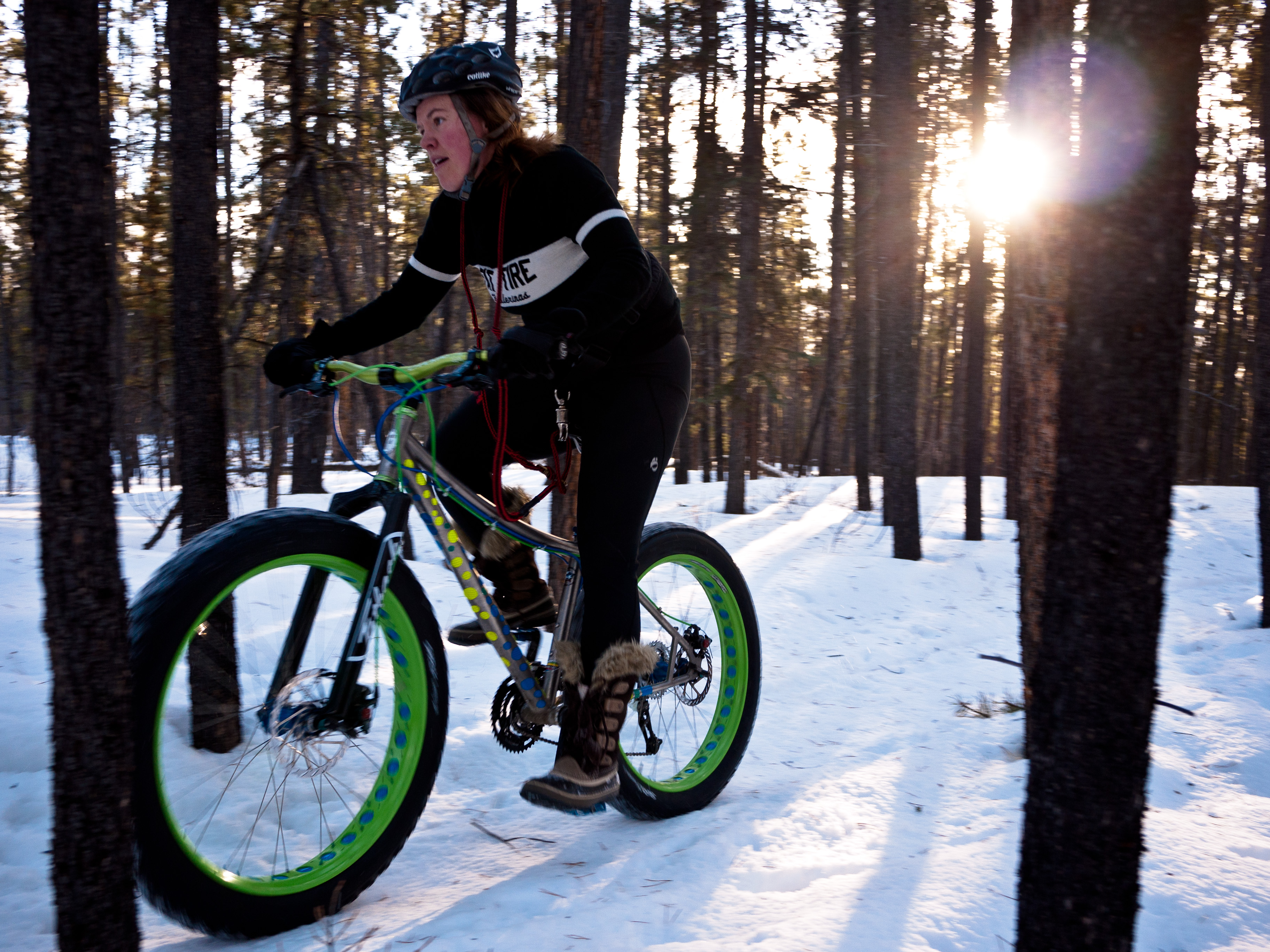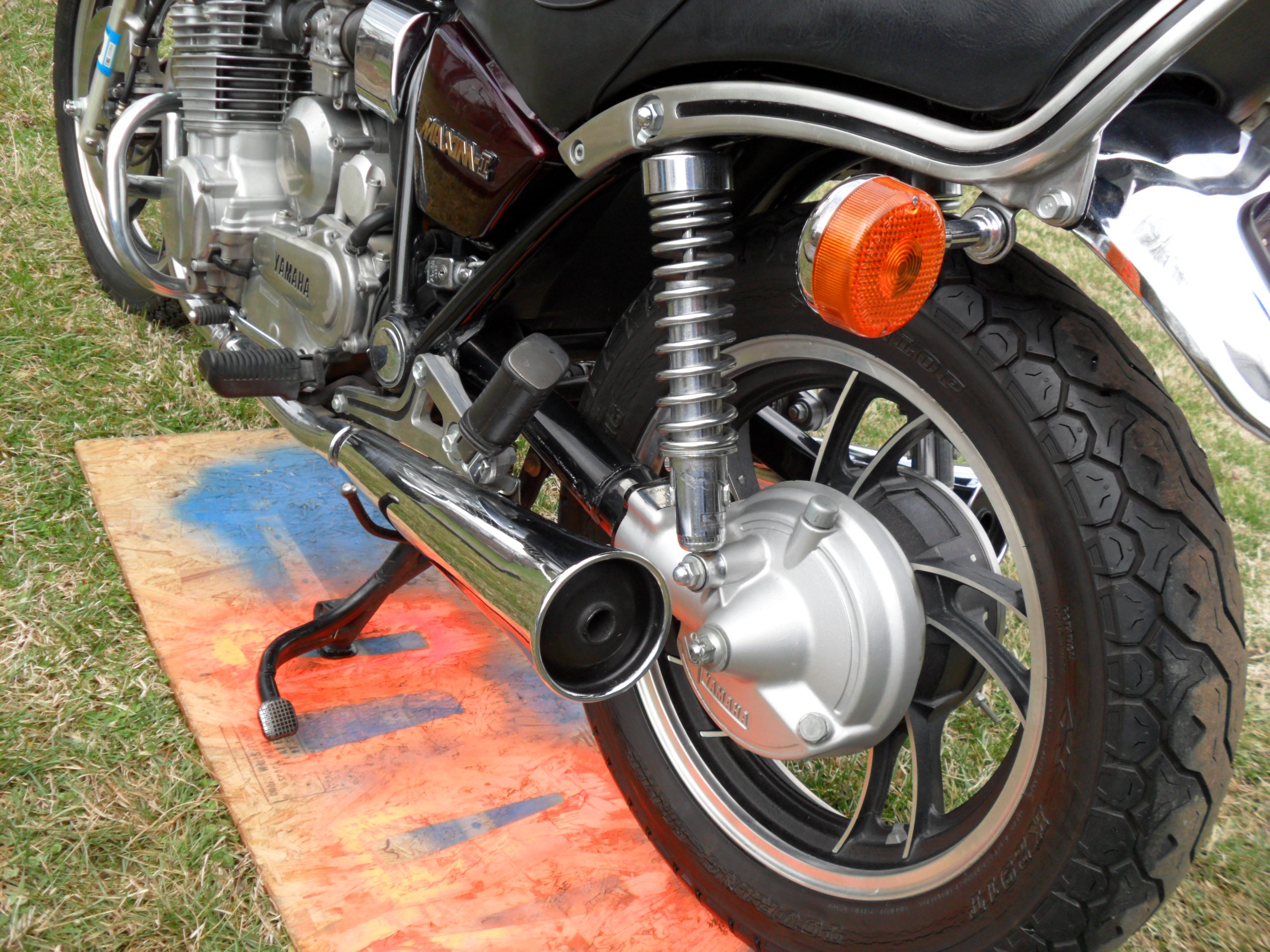|
Kawasaki (bicycle Brand)
Kawasaki is a brand of bicycle produced by various manufacturers from time to time since the 1970s. The bicycle types have included BMX, mountain bike, mountain, fatbikes, and e-bikes. Manufacturers have included Huffy, CGF Factory, and Diavelo. Promotion of the Kawasaki BMX brand included sponsoring BMX racing. BMX Kawasaki BMX bicycles were welded by Triple-A Accessories in southern California in the 1970s. Frames were made from steel and aluminum with TIG and MIG welders. The frames had a rear suspension consisting of a swingarm supported by a spring on each side. The front fork was attached to the frame by a Telescopic_fork#Triple_Tree, triple clamp but was not telescopic, even though the bottom of the stanchions were covered by a boots to give the appearance of being telescopic. The bikes had Bicycle_saddle#banana_seat, banana-style seats and Bicycle_handlebar#BMX, BMX-style handlebars. MTB Kawasaki mountain bikes were sold at Kawasaki motorcycle dealerships in the 1990s. The 1 ... [...More Info...] [...Related Items...] OR: [Wikipedia] [Google] [Baidu] |
Bicycle
A bicycle, also called a pedal cycle, bike or cycle, is a human-powered or motor-powered assisted, pedal-driven, single-track vehicle, having two wheels attached to a frame, one behind the other. A is called a cyclist, or bicyclist. Bicycles were introduced in the 19th century in Europe. By the early 21st century, more than 1 billion were in existence. These numbers far exceed the number of cars, both in total and ranked by the number of individual models produced. They are the principal means of transportation in many regions. They also provide a popular form of recreation, and have been adapted for use as children's toys, general fitness, military and police applications, courier services, bicycle racing, and bicycle stunts. The basic shape and configuration of a typical upright or "safety bicycle", has changed little since the first chain-driven model was developed around 1885. However, many details have been improved, especially since the advent of modern ... [...More Info...] [...Related Items...] OR: [Wikipedia] [Google] [Baidu] |
Mountain Bike
A mountain bike (MTB) or mountain bicycle is a bicycle designed for off-road cycling. Mountain bikes share some similarities with other bicycles, but incorporate features designed to enhance durability and performance in rough terrain, which makes them heavier, more complex and less efficient on smooth surfaces. These typically include a suspension fork, large knobby tires, more durable wheels, more powerful brakes, straight, extra wide handlebars to improve balance and comfort over rough terrain, and wide-ratio gearing optimised for topography and application (e.g., steep climbing or fast descending). Rear suspension is ubiquitous in heavier-duty bikes and now common even in lighter bikes. Dropper posts can be installed to allow the rider to quickly adjust the seat height (an elevated seat position is more effective for pedaling, but poses a hazard in aggressive maneuvers). Mountain bikes are generally specialized for use on mountain trails, single track, fire roads, and othe ... [...More Info...] [...Related Items...] OR: [Wikipedia] [Google] [Baidu] |
Fatbike
A fatbike (also called fat bike, fat tire, fat-tire bike, or snow bike) is an off-road bicycle with oversized tires, typically or larger and rims or wider, designed for low ground pressure to allow riding on soft, unstable terrain, such as snow, sand, bogs and mud. Fatbikes are built around frames with wide forks and stays to accommodate the wide rims required to fit these tires. The wide tires can be used with inflation pressures as low as to allow for a smooth ride over rough obstacles. A rating of is suitable for the majority of riders. Fatbikes were invented for use in snow and sand, but are capable of traversing diverse terrain types including snow, sand, desert, bogs, mud, pavement, or traditional mountain biking trails. The sport is sometimes referred to as fatbiking or fat-tire biking. History Although early versions of fat-tired bikes were probably built on a limited basis as long ago as the early 1900s, the first modern versions were not developed until the 1980s. ... [...More Info...] [...Related Items...] OR: [Wikipedia] [Google] [Baidu] |
E-bike
An electric bicycle (e-bike, eBike, etc.) is a motorized bicycle with an integrated electric motor used to assist propulsion. Many kinds of e-bikes are available worldwide, but they generally fall into two broad categories: bikes that assist the rider's pedal-power (i.e. pedelecs) and bikes that add a throttle, integrating moped-style functionality. Both retain the ability to be pedaled by the rider and are therefore not electric motorcycles. E-bikes use rechargeable batteries and typically are motor-powered up to . High-powered varieties can often travel more than . E-bike use is growing in some markets, as they are seen as an eco-friendly and healthy alternative to cars, fossil fuel-powered mopeds and small motorcycles, and a less physically intense alternative to conventional bicycles. Depending on local laws, many e-bikes (e.g., ''pedelecs'') are legally classified as bicycles rather than mopeds or motorcycles. This exempts them from the more stringent laws regarding th ... [...More Info...] [...Related Items...] OR: [Wikipedia] [Google] [Baidu] |
Huffy
The Huffy Corporation is a supplier of bicycles with headquarters in Dayton, Ohio, United States. Early history It has its roots in 1887 when George P. Huffman purchased the Davis Sewing Machine Company and in 1890 moved its sewing machine factory from Watertown, New York, to Dayton, Ohio. The Davis Sewing Machine company made their first Dayton bicycle, in Dayton, Ohio, in 1892. In 1924, George's son, Horace M. Huffman Sr., founded the Huffman Manufacturing Company. From then until 1949, Huffman continued to manufacture and sell bicycles under the "Dayton" brand. During the 1930s, Huffman participated in the revival of the American cycling industry, during which Horace Huffman commented on a "change of attitude". Although Huffman dabbled in the high-end of the market, they never overcame their entry-level reputation. Post-War History In 1949, Huffman developed the Huffy Convertible, which was a children's bicycle with rear training wheels and foot steps. The invention of ... [...More Info...] [...Related Items...] OR: [Wikipedia] [Google] [Baidu] |
United States Bicycling Hall Of Fame
The United States Bicycling Hall of Fame, located in Davis, California, is a private 501c3 non-profit organization formed to preserve and promote the sport of cycling. The organization was founded in 1986 in Somerville, New Jersey and has inducted cyclists who have "achieved tremendous success in racing or have enhanced the sport" since 1987. It has operated a museum in Davis since 2009. Museum The Hall of Fame is located at 303 3rd Street, Davis, California. It is on the top floor of the building and includes the bicycles of Major Taylor and Frank Louis Kramer as well as a championship sash and medals from Frank Kramer. The main floor of the museum includes topical exhibits. In 2010, there was an exhibit about the Tour of California and a display about Greg LeMond. The basement includes an extensive display of historic bicycles that includes Draisine and Velocipede models. The display also includes landmark bicycles from the 1950s through the present that illustrate the rap ... [...More Info...] [...Related Items...] OR: [Wikipedia] [Google] [Baidu] |
Swingarm
A swingarm, or "swinging arm" (UK), originally known as a swing fork or pivoted fork, is a single or double sided mechanical device which attaches the rear wheel of a motorcycle to its body, allowing it to pivot vertically. The main component of the rear suspension of most modern motorbikes and ATVs, it holds the rear axle firmly, while pivoting to absorb bumps and suspension loads induced by the rider, acceleration, and braking. Originally motorcycles had no rear suspension, as their frames were little more than stronger versions of the classic diamond frame of a bicycle. Many types of suspension were tried, including Indian's leaf spring suspended swingarm, and Matchless's cantilevered coiled-spring swingarm. Immediately before and after World War II, the plunger suspension, in which the axle moved up and down two vertical posts, became commonplace. In the latter, the movement in each direction was against coiled springs. Some manufacturers, such as Greeves, used swingarm d ... [...More Info...] [...Related Items...] OR: [Wikipedia] [Google] [Baidu] |
Telescopic Fork
A telescopic fork is a form of motorcycle front suspension whose use is so common that it is virtually universal. The telescopic fork uses fork tubes and sliders which contain the springs and dampers. The main advantages of the telescopic fork are that (i) it is simple in design and relatively cheap to manufacture and assemble; (ii) it is lighter than older designs using external components and linkage systems; and (iii) it has a clean and simple appearance that bikers find attractive. Telescopic forks sometimes have gaiters to protect the fork tubes from abrasion and corrosion. A more modern (and more expensive) version of the conventional telescopic fork is the inverted or "USD" (upside-down) fork. BMW's patented telelever front suspension appears at first glance to be conventional telescopic fork, but the fork tubes contain neither springs nor damping. Instead, a wishbone and an inboard monoshock perform suspension duties, and the forks serve to locate the front wheel an ... [...More Info...] [...Related Items...] OR: [Wikipedia] [Google] [Baidu] |
Bicycle Saddle
A bicycle saddle, often called a bicycle seat, is one of five contact points on an upright bicycle, the others being the two pedals and the two handles on the handlebars. (A bicycle seat in the specific sense also supports the back.) The bicycle saddle has been known as such since the bicycle evolved from the draisine, a forerunner of the bicycle. It performs a similar role as a horse's saddle, not bearing all the weight of the rider as the other contact points also take some of the load. A bicycle saddle is commonly attached to the seatpost and the height of the saddle can usually be adjusted by the seatpost telescoping in and out of the seat tube. Components Typical saddles are composed of a few identifiable components. Shell The shell creates the shape of the saddle. The nose of the saddle is the forward most part. It is usually rounded. The shell can be made from several materials. Most modern saddles have a hard shell made from a moulded piece of plastic, such as nylo ... [...More Info...] [...Related Items...] OR: [Wikipedia] [Google] [Baidu] |
Bicycle Handlebar
A bicycle handlebar is the steering control for bicycles. It is the equivalent of a tiller for vehicles and vessels, as it is most often directly mechanically linked to a pivoting front wheel via a stem which in turn attaches it to the fork. Besides steering, handlebars also often support a portion of the rider's weight, depending on their riding position, and provide a convenient mounting place for brake levers, shift levers, cyclocomputers, bells, etc. History The dandy horse, or draisienne, invented by Karl Drais and the first vehicle with two wheels arranged in tandem, was controlled by a bar connected to the front steering mechanism and held by the riders' two hands. The first handlebars were solid bars of steel or wood, depending on the manufacturer. Curved, moustache-shaped, drop handlebars became popular in the 1920s. Whatton bars were developed in attempt to improve the safety of penny-farthings. Handlebars made of wood, instead of steel, were used on safety bicyc ... [...More Info...] [...Related Items...] OR: [Wikipedia] [Google] [Baidu] |
Kawasaki Motorcycles
Kawasaki motorcycles are manufactured by the Motorcycle & Engine division of Kawasaki Heavy Industries. History Kawasaki Aircraft initially manufactured motorcycles under the Meguro name, having bought an ailing motorcycle manufacturer, Meguro Manufacturing with whom they had been in partnership. This eventually became Kawasaki Motor Sales. Some early motorcycles display an emblem with "Kawasaki Aircraft" on the fuel tank. During 1962, Kawasaki engineers were developing a four-stroke engine for small cars. Then some of the engineers transferred to the Meguro factory to work on the Meguro K1 and the SG, a single cylinder 250 cc OHV. In 1963, Kawasaki and Meguro merged to form Kawasaki Motorcycle Co.,Ltd. Kawasaki motorcycles from 1962 through 1967 used an emblem which can be described as a flag within a wing. Work continued on the Meguro K1, a copy of the BSA A7 500 cc vertical twin. and on the Kawasaki W1. The K2 was exported to the U.S. for a test in respons ... [...More Info...] [...Related Items...] OR: [Wikipedia] [Google] [Baidu] |
David Clinton
David Clinton (born January 2, 1960 in Sun Valley, California) is an "Old School" former professional Bicycle Motocross (BMX) racer whose prime competitive years were from 1973 to 1979. Nicknamed "Dynamite" early in his career David Clinton could be truthfully said to be the sport's first true superstar. He was the first racer to win an official National No.1 plate of any kind when the first BMX sanctioning body, the National Bicycle Association (NBA), introduced the title in 1975. During the previous year he won the junior class division of a series of what could be called proto Nationals, a part of the first major BMX series, when he took first place in the Junior class at the Yamaha Bicycle Gold Cup which decided the California State Champion. Clinton along with Scot Breithaupt and John "Snaggletooth" Palfryman participated in the first true National sanctioned by the NBA in Phoenix, Arizona in 1975 and became the first official pro in BMX in 1977 (although Thom Lund could be c ... [...More Info...] [...Related Items...] OR: [Wikipedia] [Google] [Baidu] |







